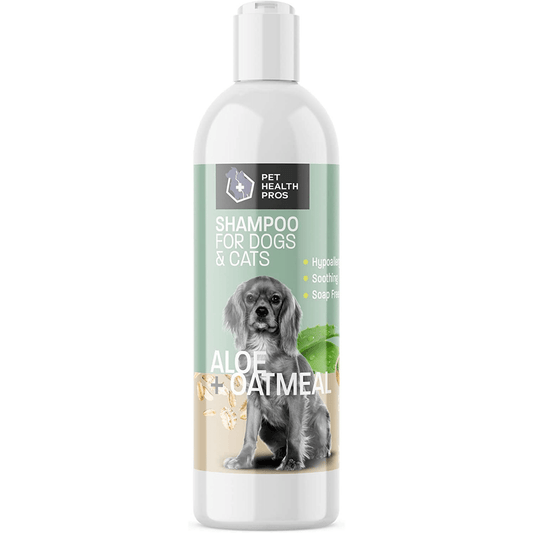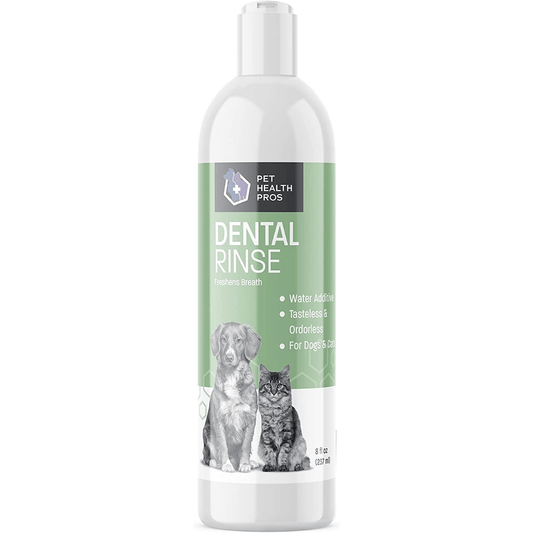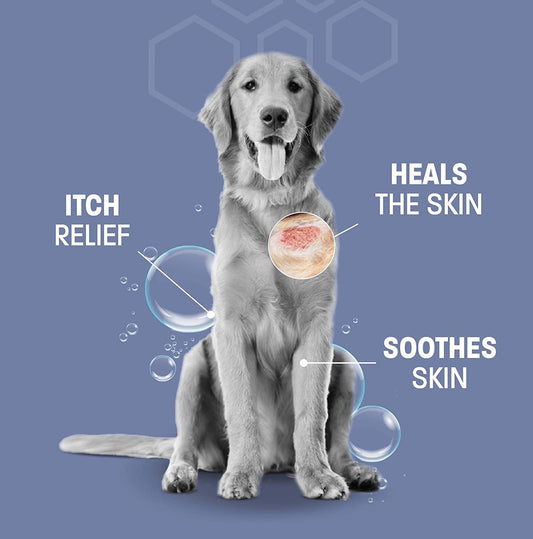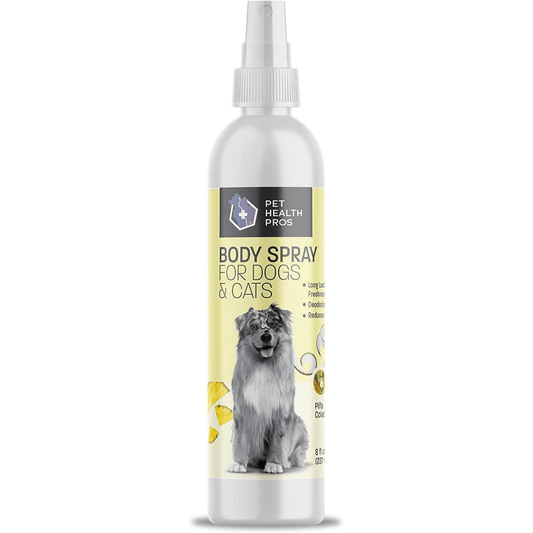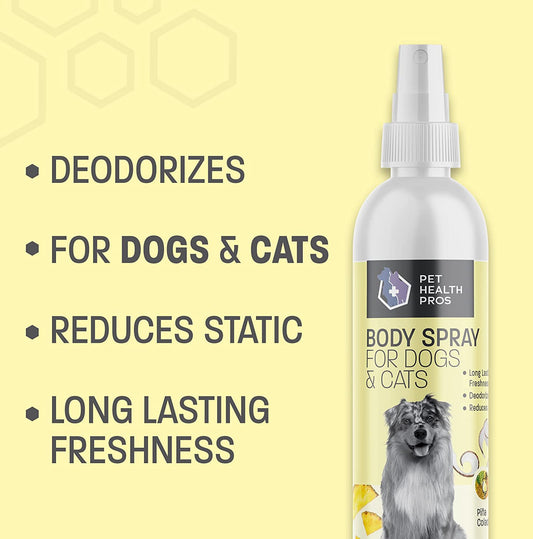Keeping your belongings safe from your dog's chewing habits is important for both your items and your pet's health. Understanding why dogs chew and how to prevent it can help you create a happier home. This guide will explore effective dog chew deterrents, products, and training techniques that can help protect your things while ensuring your dog stays happy and healthy.
Key Takeaways
- Dogs chew for various reasons, including boredom and anxiety.
- Using chew deterrents can help prevent damage to furniture and shoes.
- Choose the right product by considering your dog's needs and preferences.
- DIY solutions can be effective and are often made from common household items.
- Training your dog alongside using deterrents leads to better results.
Understanding the Need for Dog Chew Deterrents
Why Dogs Chew on Household Items
Dogs often chew on things for various reasons. Some common reasons include:
- Boredom: Dogs need mental and physical stimulation. If they don’t get enough, they may chew on furniture or shoes.
- Teething: Puppies go through a teething phase where chewing helps relieve discomfort.
- Anxiety: Some dogs chew when they feel stressed or anxious, which can lead to destructive behavior.
Common Problems Caused by Chewing
Chewing can lead to several issues, including:
- Damage to Property: Chewed furniture, shoes, and other belongings can be costly to replace.
- Injury to the Dog: If a dog chews on something harmful, like electrical cords, it can lead to serious injuries.
- Behavioral Issues: Unchecked chewing can develop into a habit that is hard to break.
Signs Your Dog Needs a Chew Deterrent
If you notice any of the following signs, it may be time to consider a chew deterrent:
- Your dog frequently chews on inappropriate items.
- You find chewed-up belongings around the house.
- Your dog seems restless or bored often.
Chewing is a natural behavior for dogs, but it can become a problem if not managed properly. Using deterrents can help protect your belongings while also guiding your dog towards more appropriate chewing habits.
Choosing the Right Dog Chew Deterrent
When it comes to protecting your belongings from your dog's chewing habits, selecting the right deterrent is crucial. There are various types of chew deterrents available, and understanding them can help you make an informed choice.
Types of Chew Deterrents Available
- Sprays: These are applied to items you want to protect, making them taste unpleasant to dogs.
- Bitter-tasting solutions: These are often used on furniture, shoes, and cords to discourage chewing.
- Physical barriers: Items like covers or gates can also help keep your dog away from certain areas.
Factors to Consider When Selecting a Deterrent
- Material: Ensure the deterrent is safe for your dog's health and won't damage your belongings.
- Ingredients: Look for natural ingredients if you prefer a less chemical approach.
- Strength: Some dogs may need a stronger deterrent than others, depending on their chewing habits.
How to Test a Chew Deterrent's Effectiveness
- Start by applying the deterrent to a small area of the item you want to protect.
- Observe your dog's reaction over a few days.
- If your dog continues to chew, consider trying a different product or method.
Remember, consistency is key. Regular application of the deterrent is essential to keep your dog from returning to the same spot.
In summary, choosing the right chew deterrent involves understanding the types available, considering important factors, and testing for effectiveness. By focusing on furniture, shoes, and cords, you can target specific areas that need protection. This approach not only helps in safeguarding your belongings but also promotes a better environment for your pet.
Top Dog Chew Deterrent Products on the Market
When it comes to protecting your belongings from your dog's chewing habits, there are several effective products available. Choosing the right chew deterrent can save your furniture and shoes from damage. Here are some popular options:
Overview of Popular Chew Deterrent Sprays
- Bitter Apple Spray: A classic choice, this spray has a strong taste that dogs dislike.
- PetSafe Ssscat Spray: This product uses a motion-activated spray to deter chewing.
- Vet’s Best Bitter Cherry Spray: Made with natural ingredients, it’s safe for pets and effective.
Natural Alternatives to Chemical Deterrents
If you prefer to avoid chemicals, consider these natural options:
- Citrus-based sprays: Dogs often dislike the smell of citrus.
- Vinegar solutions: A mix of vinegar and water can deter chewing.
- Essential oils: Some oils, like eucalyptus, can be effective when diluted properly.
Comparing Prices and Effectiveness of Products
| Product Name | Price Range | Effectiveness Rating (1-5) |
|---|---|---|
| Bitter Apple Spray | $5 - $15 | 4 |
| PetSafe Ssscat Spray | $20 - $30 | 5 |
| Vet’s Best Bitter Cherry | $10 - $20 | 4 |
Finding the right chew deterrent is essential for maintaining a peaceful home. Consider your dog's preferences and your household needs when making a choice.
In addition to these products, using Pet Genius can help you understand your dog's behavior better and find tailored solutions for their chewing habits. By combining effective deterrents with proper training, you can create a chew-free environment for your furry friend.
DIY Dog Chew Deterrent Solutions
Homemade Spray Recipes
Creating your own chew deterrent spray can be a simple and cost-effective solution. Many pet owners find success with homemade recipes that use common household items. For example, a mixture of apple cider vinegar and water can be effective. Here’s a quick recipe:
- Ingredients: 1 part apple cider vinegar, 1 part water
- Instructions: Mix in a spray bottle and apply to furniture or items you want to protect.
Using Household Items as Deterrents
You can also use everyday items to keep your dog from chewing on things they shouldn’t. Here are some options:
- Citrus Peels: Dogs often dislike the smell of citrus. Placing peels around areas can help deter them.
- Vinegar: The strong scent of vinegar can be unappealing to dogs. Wipe surfaces with vinegar to discourage chewing.
- Hot Sauce: A diluted mixture of hot sauce and water can be sprayed on items to make them less appealing.
Safety Tips for DIY Solutions
When using homemade deterrents, it’s important to keep safety in mind. Here are some tips:
- Always test a small area first to ensure it doesn’t damage the surface.
- Avoid using ingredients that could be harmful if ingested.
- Monitor your dog’s reaction to the deterrent to ensure it’s effective and safe.
Using DIY solutions can be a great way to protect your belongings while being mindful of your dog's health.
In summary, creating your own chew deterrents can be both effective and safe. With a little creativity and common household items, you can help keep your dog from chewing on things they shouldn’t. Remember, consistency is key when applying these solutions!
Training Techniques to Complement Chew Deterrents
Positive Reinforcement Strategies
Using positive reinforcement is a great way to encourage your dog to avoid chewing on unwanted items. This method involves rewarding your dog when they choose to chew on appropriate toys instead of household items. Here are some effective strategies:
- Praise your dog when they chew on their toys.
- Use treats to reward them for good behavior.
- Create a consistent routine to reinforce positive actions.
Redirecting Chewing Behavior
Sometimes, dogs chew out of boredom or anxiety. Redirecting their chewing behavior can help them focus on appropriate items. Here are some tips:
- Provide a variety of chew toys to keep your dog engaged.
- When you catch your dog chewing on something they shouldn’t, gently redirect them to their toys.
- Engage in playtime to distract them from unwanted chewing.
Consistency in Training Methods
Consistency is key when training your dog. Make sure everyone in your household follows the same rules regarding chewing. This helps your dog understand what is acceptable. Here are some points to remember:
- Set clear boundaries for your dog.
- Use the same commands and signals for training.
- Be patient and give your dog time to learn.
Training your dog takes time and effort, but with consistent practice, you can help them learn to avoid chewing on your belongings.
By combining these training techniques with chew deterrents, you can create a more effective strategy to protect your home from unwanted chewing. Remember, the goal is to teach your dog what is appropriate to chew on while providing them with the right tools and guidance.
Maintaining a Chew-Free Environment
To keep your home safe from your dog's chewing habits, it’s essential to create a chew-free environment. Dog-proofing your home is the first step in this process. Here are some effective strategies:
Dog-Proofing Your Home
- Remove tempting items: Lock up anything you don’t want your dog to chew, such as shoes, books, and remotes.
- Use barriers: Consider using baby gates or closed doors to keep your dog away from certain areas.
- Organize your space: Keep your living area tidy and free of clutter that might attract your dog’s attention.
Providing Appropriate Chew Toys
- Choose durable toys: Invest in high-quality chew toys that can withstand your dog’s chewing.
- Rotate toys regularly: Keep your dog interested by changing their toys frequently.
- Encourage play: Engage your dog with toys that promote healthy chewing habits.
Monitoring Your Dog's Behavior
- Supervise playtime: Keep an eye on your dog when they are playing to prevent unwanted chewing.
- Redirect when necessary: If you catch your dog chewing on something they shouldn’t, redirect them to an appropriate toy.
- Be consistent: Consistency is key in training your dog to understand what is acceptable to chew.
Maintaining a chew-free environment is crucial for protecting your belongings and ensuring your dog’s safety.
By following these steps, you can create a safe space for your dog while keeping your belongings intact. Remember, prevention is better than cure!
To keep your home safe for your pets, it's important to create a chew-free zone. This means removing items that could be harmful if chewed on, like wires or small objects. Make sure to provide safe toys for your pets to chew on instead. For more tips on keeping your pets healthy and happy, visit our website!
Conclusion
In conclusion, keeping your belongings safe from your dog's chewing can be a challenge, but it's definitely possible. By using the right products and techniques, you can teach your dog what is okay to chew and what isn't. Remember to provide plenty of chew toys that are safe and enjoyable for your pet. Also, consider using deterrent sprays to protect your furniture and other items. Training your dog consistently and positively will help them learn better habits. With patience and the right approach, you can protect your things while ensuring your dog is happy and healthy.
Frequently Asked Questions
Why do dogs chew on things they shouldn’t?
Dogs chew for many reasons. They might be bored, anxious, or just want to explore their world. Some puppies chew to relieve the pain of teething.
What are some common signs that my dog needs a chew deterrent?
If your dog is chewing on furniture, shoes, or other household items, that’s a sign they may need a chew deterrent. Look for signs of boredom or anxiety as well.
Are chew deterrents safe for my dog?
Most chew deterrents are safe, but it’s important to read the labels. Natural options are usually safer, but always check with your vet if you’re unsure.
How can I train my dog not to chew on furniture?
Use positive reinforcement by rewarding your dog when they chew on their toys instead of furniture. Redirect their attention when you catch them chewing the wrong thing.
Can I make my own chew deterrent at home?
Yes! You can make simple sprays with ingredients like vinegar or citrus to deter your dog from chewing on things.
What should I do if my dog continues to chew despite using deterrents?
If your dog keeps chewing, it might be a sign of stress or boredom. Make sure they have enough exercise and mental stimulation, and consider consulting a trainer.

